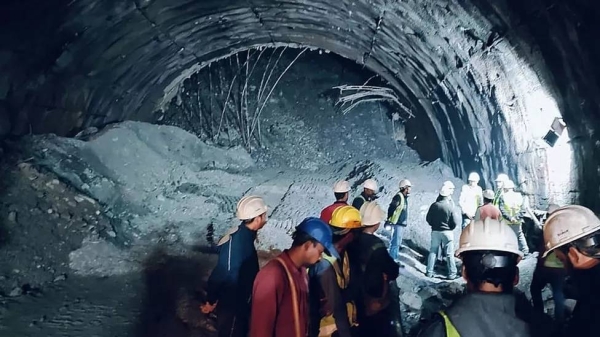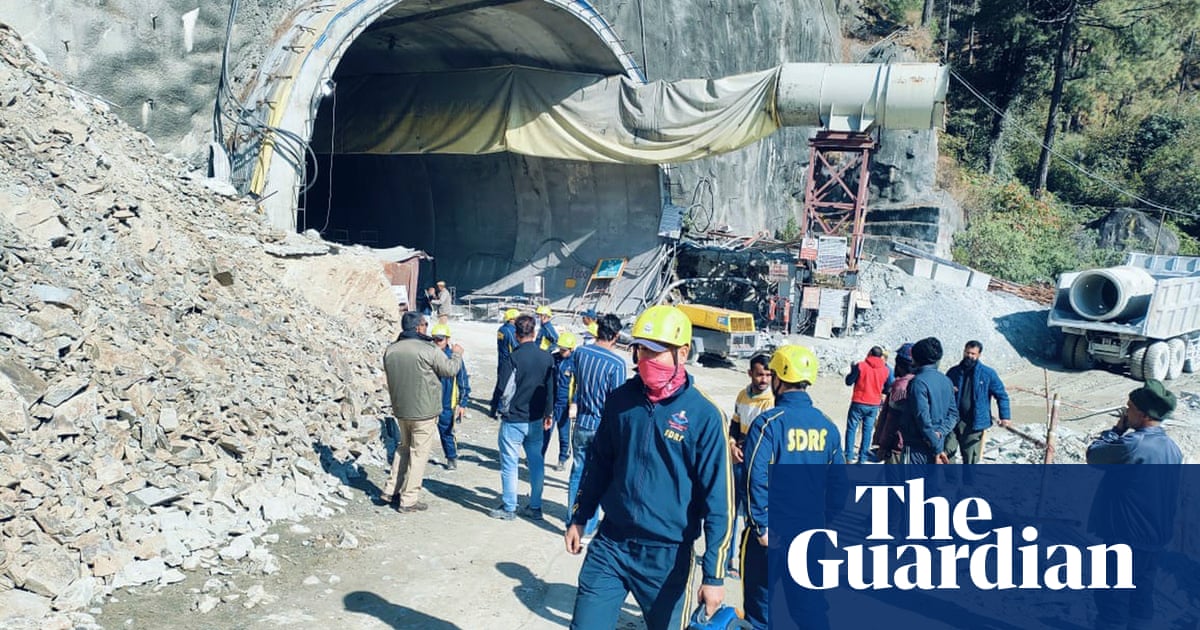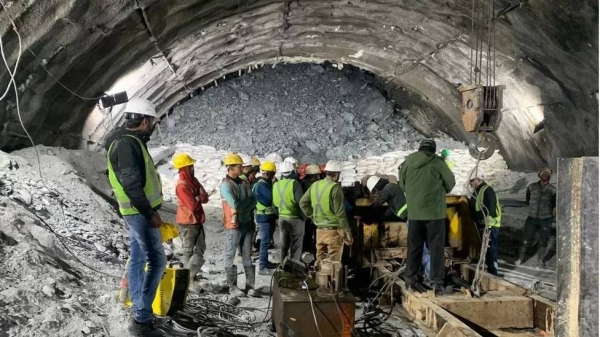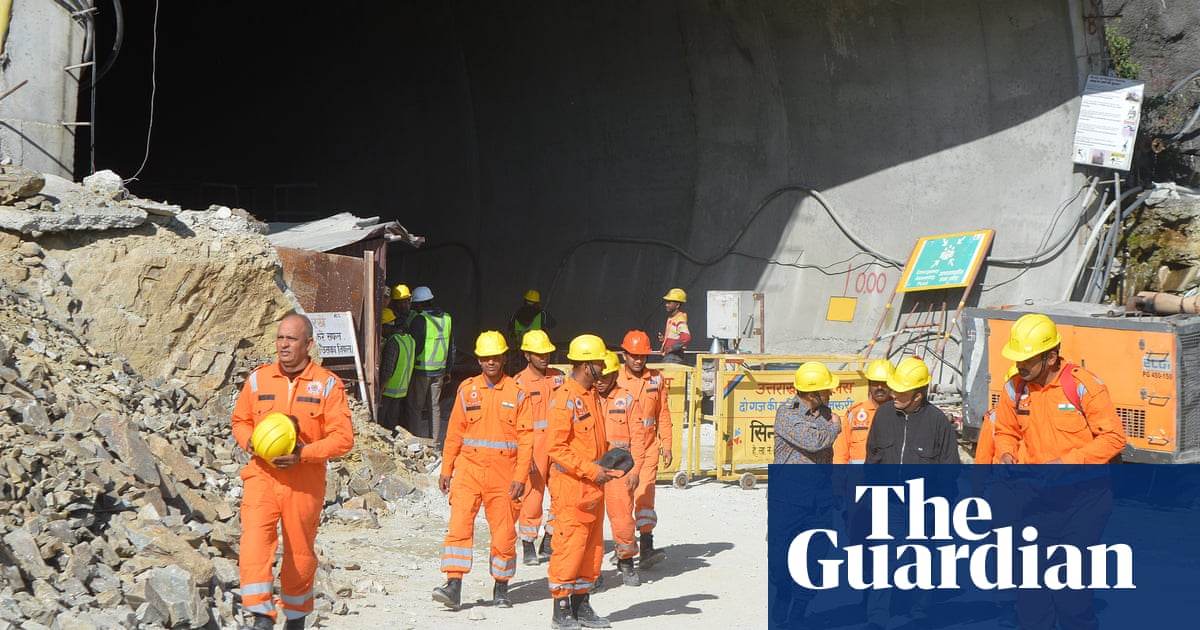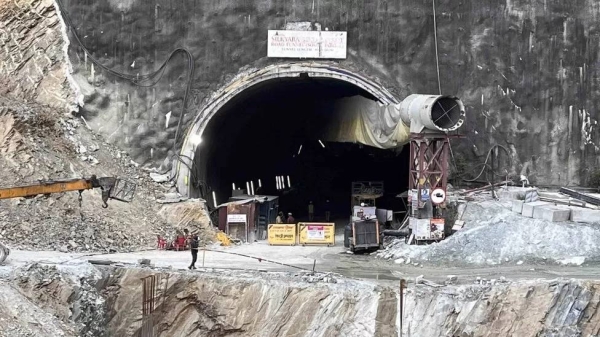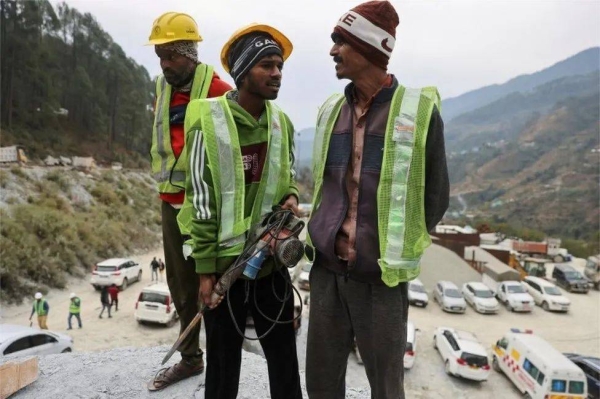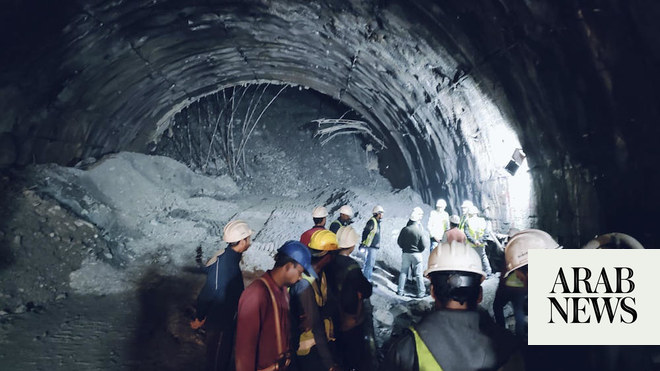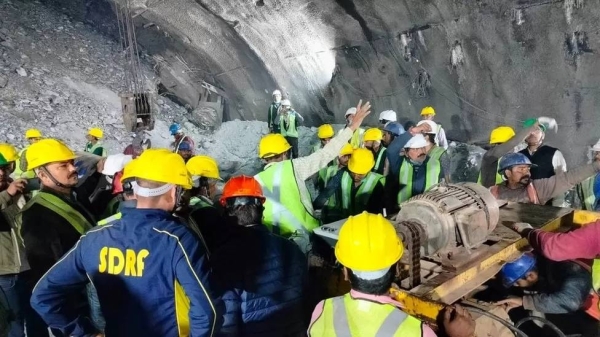
Rescue operations to save 40 workers trapped inside a collapsed tunnel in the northern Indian state of Uttarakhand have been ongoing since Sunday morning.
Forty workers, who were building the Silkyara tunnel, were trapped when part of it caved in due to a landslide nearby on Sunday.
The landslide caused heavy debris to fall on the tunnel, leading to its collapse. The mounds of debris cut off oxygen supply to the workers.
Officials said the men were trapped some 200m into the tunnel but none of them were injured.
As of Friday afternoon, rescue workers had dug through 24m of the 60m debris needed to lay a pipe that would help the trapped men crawl out of the tunnel.
"If the work continues at this rate, it will take another 40-48 hours to rescue the workers," Col Deepak Patil, official in charge of rescue operations, said on Friday.
What is this tunnel?
The tunnel in Uttarkashi district is part of the federal government"s ambitious $1.5bn (£1.2bn) highway project to improve connectivity to famous pilgrimage sites in Uttarakhand. The mountainous state, where several Himalayan peaks and glaciers are located, is home to some of the holiest sites for Hindus.
This 4.5km (2.7 miles) tunnel is meant to provide all weather connectivity to Yamunotri, one of the four most revered Hindu pilgrimages site in the Himalayas. It is expected to reduce travel distance between Uttarkashi and Yamunotri town by 26km (16 miles).
Thousands of devotees flock to the temple at Yamunotri every year as it is the starting point for the Himalayan Char Dham Yatra pilgrimage, which goes through Gangotri and Kedarnath before culminating in the temple town of Badrinath.
Construction of the tunnel was approved by the federal government in 2018.
Environment experts have criticised its construction despite the fragile ecology of the region. "When you are aligning a tunnel in an area that is very close to the highly fragile Himalayas, the authorities should have conducted some geological investigation," Navin Juyal, a geologist, told The Hindu. "Then the fragility of this place should have been brought to the notice of the authorities."
Who are the people trapped?
Most of the workers trapped in the tunnel are migrant labourers from states in northern and eastern India.
Among the 40 workers, officials report that 15 are from Jharkhand, eight from Uttar Pradesh, five from Odisha, four from Bihar, three from Bengal, and two each from Assam and Uttarakhand, with one from Himachal Pradesh.
The Jharkhand government has sent a three-member team to aid rescue workers.
Sharman Batra, 21, is one of the few workers who noticed the debris beginning to fall from the ceiling of the tunnel on Sunday morning.
He and some other workers - Anand Tudu, 24, Santosh Pandit, 40 and Pem Yadav, 29 - were able to escape before a part of the tunnel collapsed, cutting them off from the 40 men trapped inside.
They are now waiting outside for their friends.
"When something like this happens, one feels depressed and sad," Mr Batra told the BBC. "I don"t feel like eating. I feel low".
Their families have asked them to stop risking their lives by working at the tunnel construction site. They have also been sent money by their families and asked to come back home. But Mr Batra and the other workers say they will return only after their friends inside are rescued.
How are the workers surviving in the tunnel?
Authorities said they established contact with the trapped men on Sunday night using walkie-talkies.
A pipeline, which was laid for supplying water to the tunnel for construction work, is being used to supply the trapped men with oxygen, food - chickpeas, dried fruits, almonds and puffed rice - and water.
"The food items are providing them enough calories and it can help them for up to nine days," RCS Pawar, chief medical officer of Uttarkashi district, told Reuters.
Officials say the workers have been sent medicines for fever, headache and nausea through the pipes.
Family members of some of the workers told the BBC that they were worried about the health of their relatives.
Reports say a six-bed medical facility has been set up near the tunnel while hospitals nearby are on standby.
What is the rescue plan?
The plan involves drilling through the debris to create space for a pipe that the men can use to crawl out of the tunnel.
Officials said they had to drill through 60m of debris to lay the pipe. They initially expected the rescue operation to be complete by Tuesday or Wednesday night.
The drilling pace faced hindrances due to "natural obstacles" complicating the rescuers" efforts to reach them, Ashok Kumar, the chief of Uttarakhand police, told the BBC.
On Wednesday night, new equipment - a powerful horizontal drill with an augur or drill bit - was flown in by military aircraft in three parts and assembled at the accident site.
The new drill was expected to speed up the rescue process. Workers are drilling a hole that is wide enough to fit a metal pipe of 900mm diameter for the trapped men to crawl through.
Authorities say another machine will be airlifted from the central Indian state of Madhya Pradesh on Saturday as backup so that the rescue operation can continue uninterrupted.
The tunnel is very wide inside and has a thick 400m lining, says Col Deepak Patil.
"There are lots of big lights and a lot of air inside for two kilometres," he told the BBC. "So there"s not going to be any problem inside in terms of leaving [the tunnel]. We"re also pumping in a lot of air." — BBC




